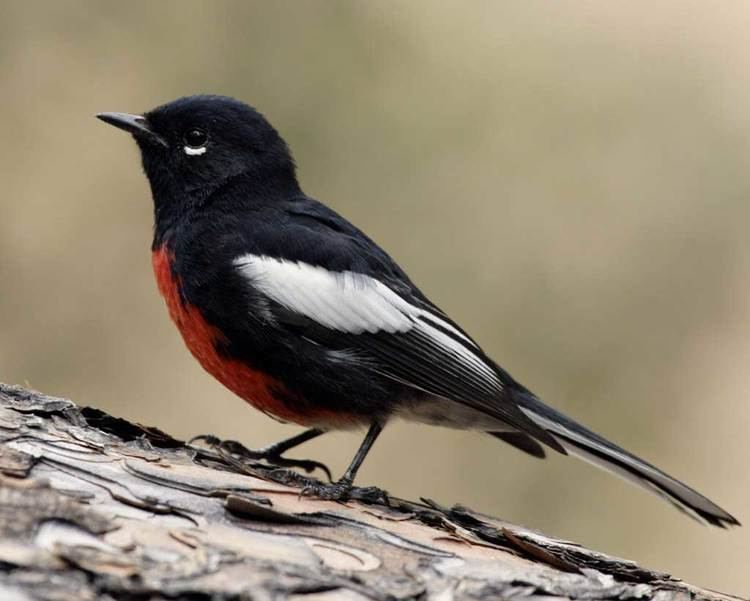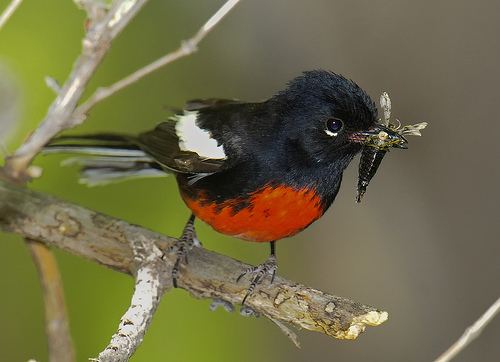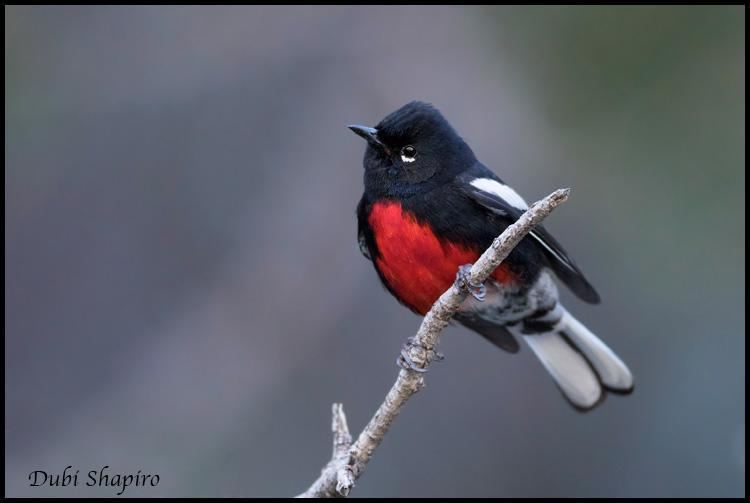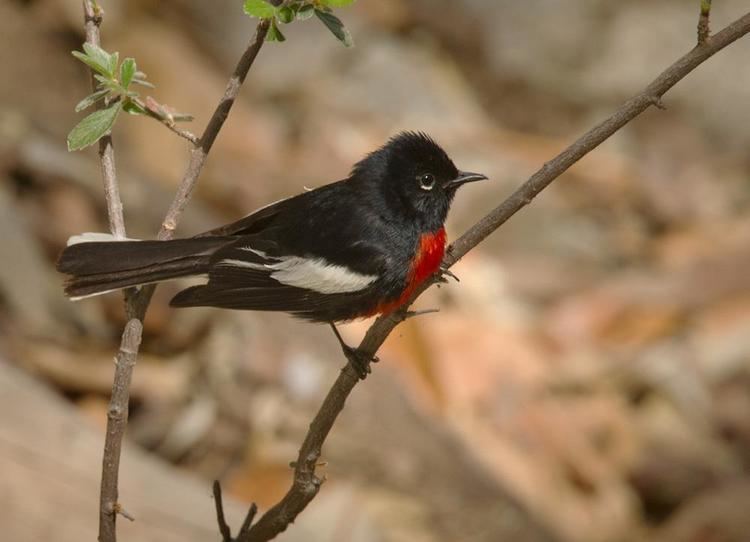Kingdom Animalia Order Passeriformes Genus Myioborus Higher classification Whitestart | Phylum Chordata Family Parulidae Scientific name Myioborus pictus Rank Species | |
 | ||
Similar Bird, New World warbler, Whitestart, Red‑faced warbler, Grace's warbler | ||
The painted whitestart or painted redstart (Myioborus pictus), is a species of New World warbler.
Contents
Taxonomy

When he first described the species in 1829, naturalist William John Swainson assigned it to the genus Setophaga — the same genus as that of the American redstart — where it remained for nearly a century and a half, though one naturalist placed it in the Old World flycatcher genus Muscicapa during that time. By the mid 1960s, researchers recommended that it be moved to its current genus, Myioborus, based on various similarities with the other whitestarts. There are two subspecies, which differ only slightly in appearance:

Description

The painted whitestart is the largest of the whitestarts, measuring 15 cm (5.9 in) in length and weighing between 5.9–9.6 g (0.21–0.34 oz). The sexes are the same in plumage, though males average slightly larger than females. The adult is mostly black, with a bright red lower breast and belly, large white wing patches, white outer tail feathers and white crescents below its eyes. The bill and legs are blackish.

The juvenile painted whitestart lacks the red belly and glossy black plumage of the adult. It is brownish-gray overall, with a paler belly and undertail coverts, and a pale cream or buff tinge to its wing patches.
Voice
Painted whitestarts are unusual amongst birds, and especially amongst warblers in that the female painted redstart is capable of singing just as well as a male, and during spring courtship a pair will often bond by singing together.
Habitat and range
Painted whitestarts are common at heights between 1,500–2,500 m (4,900–8,200 ft) and will make their homes in open oak woodlands and canyons in Central America, but will also range as far north as Arizona and New Mexico in the United States, called the Madrean sky islands as well as the Mogollon Rim to the north, (southern regions of the Colorado Plateau). During the summer and winter, these birds may venture as far south as Nicaragua. In 2010, a painted redstart was found further north in California than had ever been recorded, in Auburn, CA, east of Sacramento. In 2013, one was observed in Berkeley, CA.
Nesting
Their nesting is done on the ground, and they create their nests so that they will be hidden among rocks, roots, or tufts of grass on steeply sloping ground. Their nests are large and shallow, constructed of strips of bark, plant fibers, leaves, and grass. The female will lay 3 or 4 white to cream-colored eggs that are speckled with fine brown and reddish spots. Incubation lasts about 14 days, but other nesting details are largely unknown.
The young painted whitestart has a deep yellow-orange mouth lining.
